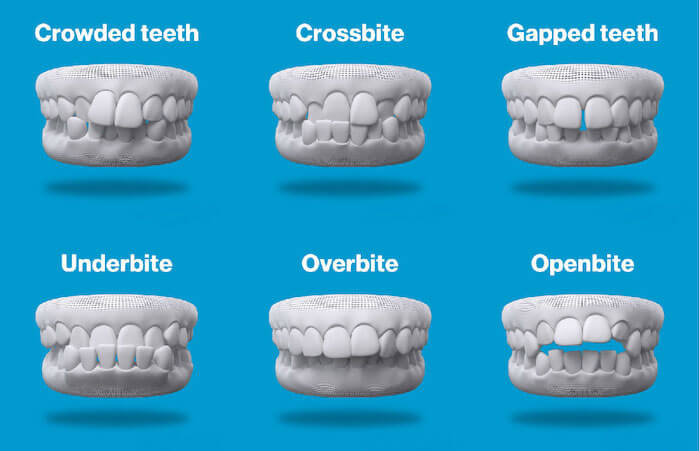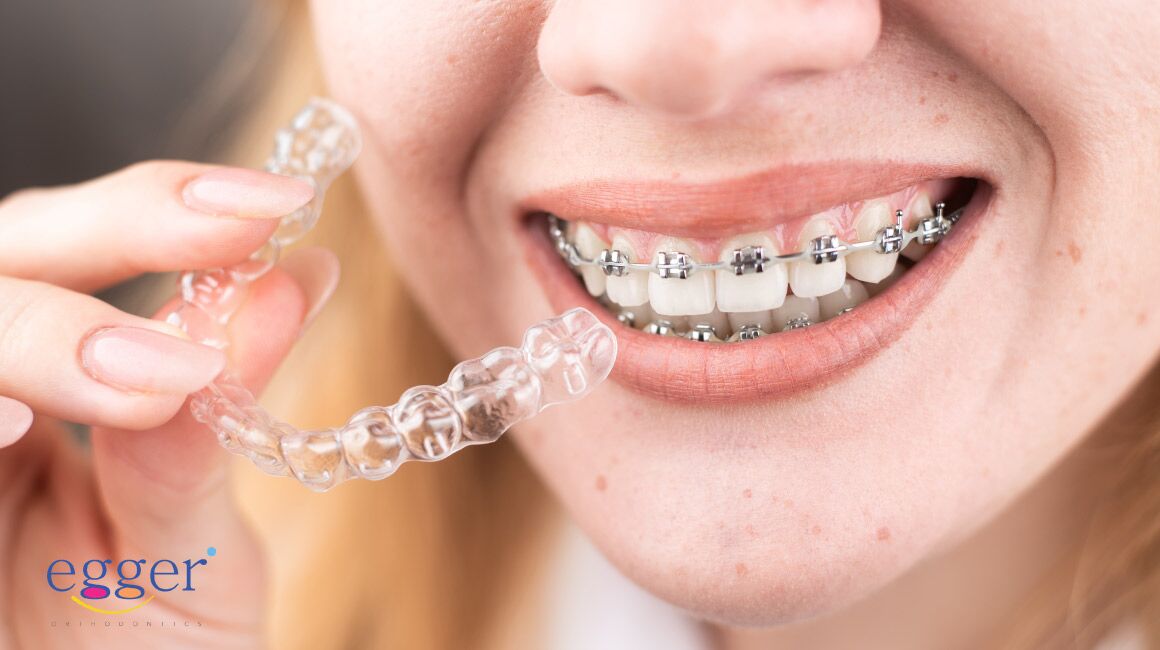Invisalign vs. Traditional Dental braces: Which Option Is Right for You?
When taking into consideration orthodontic treatment, the selection in between Invisalign and typical braces provides several crucial variables that merit careful examination. Invisalign uses a very discreet alternative with detachable aligners, while traditional dental braces offer a much more noticeable yet effective service for severe misalignment.
Review of Treatment Alternatives

In contrast, typical dental braces contain steel braces and cables that are bonded to the teeth. This approach applies continual stress gradually to attain placement. While effective for intricate orthodontic concerns, conventional dental braces need regular visits for adjustments and can position obstacles in preserving oral hygiene because of the trouble of cleaning up around braces and cables.
Both options have their qualities, and the option usually hinges on specific oral conditions, way of life preferences, and patient compliance. Inevitably, speaking with an orthodontic specialist is essential for determining the most appropriate therapy strategy customized to private requirements. Comprehending the nuances of each choice can substantially affect the general success of orthodontic therapy.
Visual Considerations
A considerable factor influencing the selection in between Invisalign and typical braces is the visual charm each treatment uses. Invisalign aligners are crafted from clear plastic, making them essentially unseen when worn. This very discreet look is especially attracting teenagers and adults who may feel uncomfortable concerning their orthodontic therapy. The ability to maintain an all-natural smile throughout the positioning procedure can dramatically improve the patient's self-confidence in social and specialist setups.
On the other hand, typical dental braces consist of steel brackets and cords, which can be a lot more obvious. While innovations in orthodontic modern technology have resulted in the growth of smaller sized braces and tinted elastics, traditional dental braces still maintain a more noticeable account. For some individuals, the presence of dental braces may deter them from seeking required treatment.
Inevitably, the option between Invisalign and typical dental braces may depend upon individual preferences concerning visual appeals. Patients that focus on discernment often favor Invisalign, while those who are less concerned about exposure may select typical braces. Comprehending the visual ramifications of each alternative is essential for making an informed choice that straightens with one's way of life and preferences.
Convenience and Convenience

In regards to benefit, Invisalign aligners are removable, enabling people to enjoy their favored foods without limitation and keep optimum dental health. Brushing and flossing are simplified, as the aligners can be obtained throughout these routines, whereas conventional braces require cautious steering around braces and wires.
Additionally, Invisalign's modern system permits less orthodontic brows through. People normally get numerous collections of aligners at as soon as, which can improve the therapy procedure and minimize time spent in the orthodontist's chair. On the other hand, conventional dental braces require routine adjustments, making them less practical for those with busy schedules. Invisalign. Overall, the comfort and benefit of Invisalign make it an enticing option for lots of individuals looking for orthodontic treatment.
Therapy Duration and Effectiveness
While both Invisalign and traditional dental braces work in fixing dental misalignments, the period of therapy can vary dramatically between both choices. Typically, Invisalign therapy can take anywhere from 12 to 18 months, depending upon the intricacy of the situation. The clear aligners work by progressively moving teeth into their wanted positions, and regular follow-ups with an orthodontist help guarantee progression continues to be on the right track.
In contrast, conventional braces frequently call for a longer dedication, generally ranging from 18 months to 3 years. This is because of their fixed nature and the use of wires and brackets, which can be extra reliable for complex instances and severe imbalances (Invisalign). The therapy efficiency of typical braces is well-documented, as they allow for precise changes and better control over tooth activity
Inevitably, the option between Invisalign and traditional dental braces might hinge on both the awaited treatment duration and the certain dental concerns available. Consulting with an orthodontist is important, as they can supply tailored referrals based on individual needs, ensuring the picked technique aligns with desired timeframes and end results.
Price Comparison and Insurance Choices
Expense plays a significant function in the decision-making procedure for individuals thinking about orthodontic treatment, whether choosing Invisalign or traditional braces. Typically, the cost of Invisalign arrays from $3,000 to $8,000, while conventional dental braces normally cost in find out here now between $2,000 and $6,000. Variables influencing these prices consist of the complexity of the case, the duration of therapy, and geographical place.
Insurance protection can significantly affect out-of-pocket costs. Several dental insurance strategies provide partial insurance coverage for orthodontic therapies, however the specifics can vary extensively. It is vital for over at this website individuals to examine their insurance plan to establish the extent of insurance coverage for either choice. Generally, conventional dental braces might be more regularly covered by insurance strategies compared to Invisalign, which some insurance providers classify as a cosmetic treatment.
Furthermore, several orthodontic techniques offer versatile layaway plan, making both treatment options extra easily accessible. Patients ought to ask about possible funding options and discount rates for ahead of time settlements. Assessing the total price, consisting of insurance advantages and payment plans, is necessary for making an educated choice that straightens with both aesthetic choices and spending plan considerations.

Final Thought
In recap, the selection in between Invisalign and conventional dental braces pivots on numerous factors, consisting of aesthetic choices, convenience, therapy period, and price. Invisalign supplies a very discreet, detachable option that promotes dental health and dietary adaptability, while standard braces may be better for intricate dental problems and typically come with a lower rate point. Eventually, appointment with an orthodontist is necessary to evaluate individual scenarios and figure out one of the most ideal therapy choice for achieving optimal oral placement.
When thinking about orthodontic treatment, the choice in between Invisalign and standard braces presents a number of vital variables that merit careful examination.Comparing Invisalign and conventional dental braces exposes unique treatment options for orthodontic modification.While both Invisalign and conventional dental braces are efficient in fixing dental misalignments, the duration of therapy can vary significantly between the 2 options.Cost plays a substantial duty in the decision-making procedure for people thinking about orthodontic therapy, whether choosing for Invisalign or conventional braces.In summary, the go to website choice in between Invisalign and traditional braces hinges on multiple elements, including visual preferences, comfort, therapy period, and price.